






BIOSECURITY & PEST CONTROL www.poultrytimes.com Your poultry industry news source since 1954 May 6, 2024




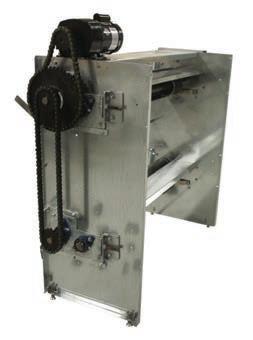
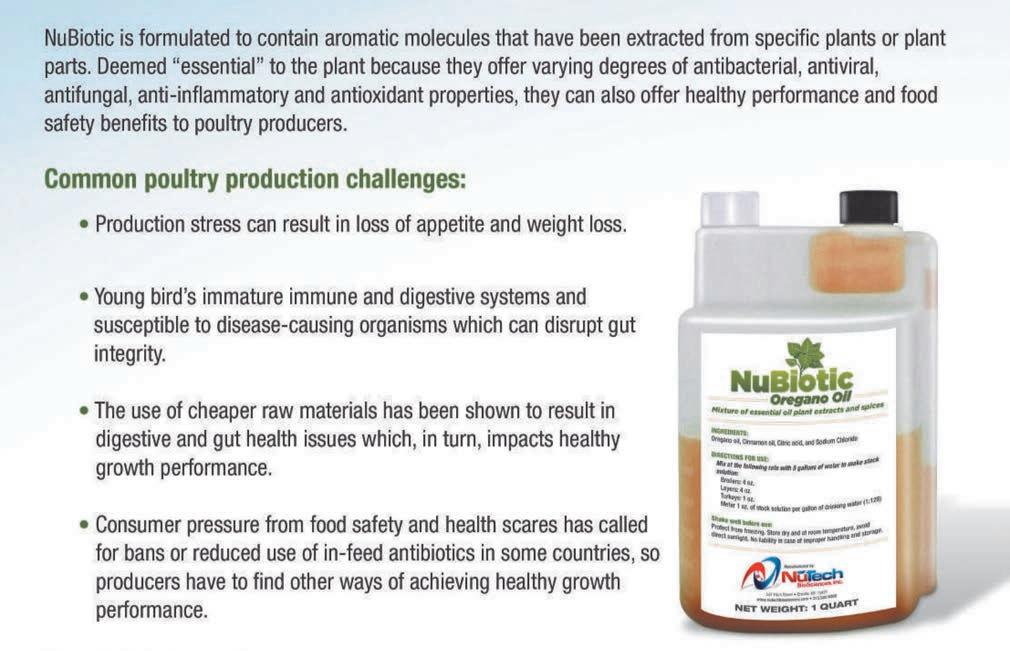





Product inquiries: info@nutechbio.com 315-251-4324 • 315-751-0729

POULTRY TIMES POULTRYTIMES.COM 4
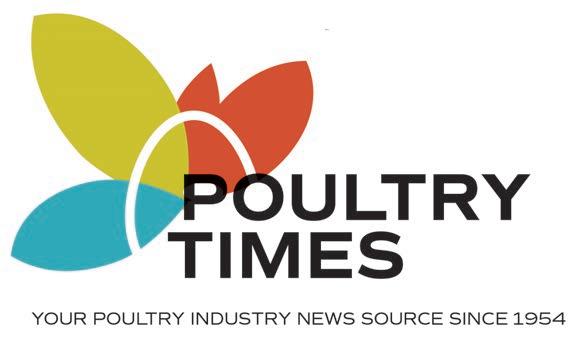

News
7 | Should the commercial U.S. poultry industry vaccinate against bird flu?
Business Features
18 | Norfolk Southern reaches $600M settlement over 2023 derailment
On the cover
BIOSECURITY & PEST CONTROL
12 | Gold Creek Foods sues Dawsonville, Ga.

Calendar
MAY
MAY 8-9 — STAKEHOLDERS SUMMIT 2024, Kansas City, Mo. Contact: Animal Agriculture Alliance, 2101 Wilson Blvd, Suite 810-B, Arlington, Va. 22201; summit@ animalagalliance.org; https:// animalagalliance.org.
MAY 8-9 — CANC CONFERENCE & TECHNICAL SYMPOSIUM, Visalia Marriott Convention Center, Visalia,
20 | TAMU team working with Homeland Security to protect U.S. food supply chain
Calif. Contact: California Grain & Feed Association, 1521 I Street, Sacramento, Calif. 95814; Ph: 916-441-2272; https://cgfa.org.
MAY 14 — GPF ANNUAL MEETING, Georgia Poultry Laboratory Network, Gainesville, Ga., 9:30-11 a.m.
Contact: Georgia Poultry Federation, P.O. Box 763, Gainesville, Ga. 30503. Ph: 770-532-0473; Email: laurabeth@gapf.org; www.gapf. org.
Viewpoints

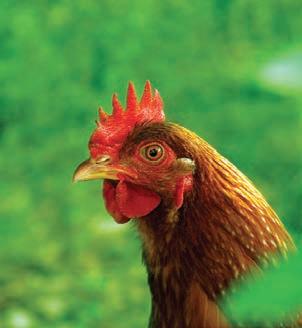



“During the trade mission to South Korea, U.S. exporters conducted more than 600 meetings with potential importers as they look to expand the variety of American products available to Korean consumers.” — USDA Foreign Agricultural Service | 10
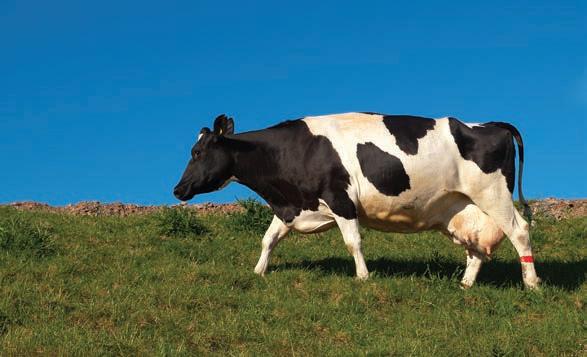
9 | Association seeks to rename influenza strain affecting cattle




POULTRY TIMES POULTRYTIMES.COM 5 VOL. 71 | NO. 10 | MAY 6, 2024 30
BIOSECURITY & PEST CONTROL www.poultrytimes.com Your poultry industry news source since 1954 May 6, 2024 IN THIS ISSUE
Connect with us Visit us at: POULTRYTIMES.COM 24/7 on the World Wide Web or scan the code to the right /poultrytimes @PoultryTimes /poultrytimesga

CORPORATE HEADQUARTERS
POULTRY TIMES PO Box 1338 Gainesville, GA 30503
PH | 770-718-3443 FAX | 770-532-4894
POULTRY TIMES STAFF
CINDY WELLBORN
General Manager, Poultry Times/PoultryTimes.com 770-718-3443 cwellborn@poultrytimes.com
DAVID B. STRICKLAND
Editor, Poultry Times 770-718-3442 dstrickland@poultrytimes.com
ELIZABETH BOBENHAUSEN
Content Writer, Poultry Times 770-209-3335 ebobenhausen@poultrytimes.com
RACHEL DANFORD
Digital Manager, PoultryTimes.com 770-831-8631 rdanford@poultrytimes.com
STACY LOUIS
Sales Manager, Poultry Times/PoultryTimes.com 770-718-3445 slouis@poultrytimes.com
JANICE SISK
Sales & Administrative Assistant, Poultry Times/PoultryTimes.com 770-718-3439 jsisk@poultrytimes.com
KIM EWING
Circulation 770-718-3420 kimewing@poultrytimes.com
Index of Advertisers
Be sure to pay a visit to these esteemed sponsors of the Poultry Times, recognizing them as vital contributors to the industry who greatly appreciate your support.
Alternative Design | 2 800-320-2459; www.altdesign.com
Bird Control Group | 14 844-406-9280; www.birdcontrolgroup.com
Creekview Mfg. | 22 717-445-4922; https://creekviewmanufacturing. com
Eagan Mfg. | 19 870-878-6805; www.eaganmfg.com EnviroTech | 18 888-563-2254; https://envirotech.com
Farmer Boy Ag | 21 717-866-7565; www.farmerboyag.com
Impact Poultry Products | 20 800-448-4723; www.impactpoultryproducts.com
Kelley Mfg. | 16 800-444-5449; www.kelleymfg.com
Kuhl Corp. | 17 908-782-5696; www.kuhlcorp.com
Kunafin (The Insectary) | 29 800-832-1113; www.kunafin.com
L.B. White | 23 608-783-5691; www.lbwhite.com
Lewis Brothers | 24 912-367-4651; www.lbmfg.com
Motomco | 15 800-237-6843; www.motomco.com
Neogen | 32 800-234-5333; www.neogen.com
NuTech Biosciences | 3 315-505-6500; https://nutechbiosciences.com
Overdrive Lighting | 27 800-657-0509; www.aglights.com
Precision Lighting | 1, 4, 25 800-737-1837; www.poultrylighting.com
The Egg Carton Store | 29 866-333-1132; www.eggcartonstore.com
Walinga USA | 28, 31 800-466-1197; www.walinga.com
Weightech | 17, 26 800-457-3720; www.weightechinc.com
Publication Disclaimer
Poultry Times (USPS 217480) ISSN 0885-3371 is published biweekly, 345 Green Street, N.W., Gainesville, GA 30501. Telephone 770-536-2476; Fax 770532-4894. Postage paid at Gainesville, Georgia 30501. Poultry Times assumes responsibility for error in first run of an in-house designed ad only. Advertisers have ten (10) days from publication date to dispute such an advertisement. After ten (10) days, ad will be deemed correct and advertiser will be
charged accordingly. Proofs approved by advertiser will always be regarded as correct. Subscriptions: Surface mail in U.S., $25.00 for one year, $45 for two years and $65 for three years. Business or occupation information must accompany each subscription order.
Change of Address: Postmaster, report change of address to Poultry Times, P.O. Box 1338, Gainesville, GA 30503.
Companion Poultry Publications: A Guide to Poultry As-
sociations; Poultry Resource Guide.
The opinions expressed in this publication by authors other than Poultry Times staff are those of the respective author and do not necessarily reflect the opinions of Poultry Times. Advertisement content is the sole responsibility of the advertiser. Poultry Times assumes no liability for any statements, claims or assertions appearing in any advertisement. © 2024 Metro Market Media
POULTRY TIMES POULTRYTIMES.COM 6
Gainesville, Georgia 30503
COVER STORY

Should the commercial U.S. poultry industry vaccinate against bird flu?
DAVID B. STRICKLAND
Poultry Times Editor dstrickland@ poultrytimes.com
WASHINGTON — Increased concern is being focused on highly pathogenic avian influenza, with its recent species jump into some of the nation’s dairy cattle, and the annual spring wild bird migration season that has poultry producers on alert for the disease’s spread — there has been some attention given to the possibility of vaccinating poultry against AI.
The United States poultry industry currently does not vaccinate against HPAI.
Mike Brown, president of the National Chicken Council, in a recent column for the Virginia Poultry Federation’s newsletter,
addressed the topic of whether commercial poultry should be vaccinated against this virus.
“Vaccination is not a silver bullet or a proven eradication method for HPAI,” Brown said.
“Vaccinating commercial poultry will not eliminate HPAI circulating in and being spread through the wild bird population. Vaccinating commercial poultry will not keep dairy cows from being infected with HPAI. Vaccinating commercial poultry will not even keep all vaccinated birds free of the virus, either.”
In his column for the Poultry Times annual outlook issue in late 2023, Brown noted that NCC does not support usage of an AI vaccine because of the effects it would have on international trade and exports.
“Most countries, including the U.S., do not recognize countries
that vaccinate as free of HPAI due to concerns that vaccines can mask the presence of the disease,” Brown said in his outlook. “Therefore, these countries do not accept exports from countries that vaccinate.”
Brown, in his most recent article and in the previous one, added that even if one particular sector of the U.S. industry chose to vaccinate, it would impact broiler exports as trading partner countries view all the industry segments the same. He added that the U.S. exports approximately 16 percent of its annual chicken meat production, with a value of more than $5 billion.
“If we start vaccinating for HPAI in the U.S. — regardless of what poultry sector vaccinates — the broiler industry will lose our ability to export which will cost the industry and the U.S.
economy billions and billions of dollars every year,” Brown said in this recent column.
He added that NCC supports biosecurity practices designed to keep poultry farms safe, and discussions on research on vaccination programs that would not have a negative impact on exports.
“We currently support USDA’s Animal and Plant Health Inspection Service ‘stamping out’ policy to eradicate the virus and we believe that this is the best approach to eliminating HPAI in the U.S.,” Brown added. “We also encourage APHIS to continue to work with our trading partners to ensure that, should a vaccination strategy be deployed, we can continue to feed the world with safe, wholesome and affordable poultry products.”
POULTRY TIMES POULTRYTIMES.COM 7
PT

Key steps to prevent exposure to bird flu
BY ELIZABETH BOBENHAUSEN Poultry Times staff ebobenhausen@ poultrytimes.com
GAINESVILLE, Ga. — Avian Influenza is on the rise across the United States; however, the Centers for Disease Control and Prevention says that the risk of the populace contracting the virus from wild birds, cattle, and other animals remains slim. The CDC released a media statement that will bring awareness to the public in regard to the disease.
The CDC recommends that certain safety measures be taken:
• As a general precaution, whenever possible people should avoid direct contact with wild birds and other animals infected with or suspected to be infected with bird flu viruses and observe them only from a distance, if possible.
• Wild birds can be infected with avian (bird) influenza (flu) A viruses even if they don’t look sick.
• Avoid unprotected contact with domestic birds (poultry) or other animals that may be sick or have died or are suspected or known to have bird flu virus infection.
• Do not touch surfaces that may be contaminated with saliva, mucous, animal feces, raw milk, animal litter (bedding material), or materials contaminated by wild or domestic birds or other animals with confirmed or suspected bird flu virus infection.
Best prevention methods
Wild birds that have contracted the illness will transmit the virus through saliva, mucus
or fecal matter. If any other animals such as cattle have become infected with the disease, they will transmit it through respiratory discharges and bodily fluid. Bird flu can also be transmitted through cow milk. Influenza A, in mammals, can not only affect their respiratory systems, but it can affect other organs as well.
It is rare that a person would contract bird flu. If a person were to catch the virus, it would be transmitted through a person’s eyes, nose or mouth as they may have touched something that was contaminated. It can be inhaled through dust particles. A person will not contract the virus immediately like a common cold. It takes a prolonged amount of time without proper protective wear around animals.
There may be some people who are at risk just based on where they work. Places like “bird rehabilitation centers, people who work at bird and other animal sanctuaries, poultry farm or dairy farm workers, people who raise backyard bird flocks, and responders to bird flu outbreaks in birds or other animals.”
According to the CDC, some protective measures are to:
• Use protective equipment like gloves, an N95 respirator if available or, if not available, a well-fitting facemask (e.g., a surgical mask), and eye protection (e.g., goggles).
• Wash your hands with soap and water after touching birds.
• Avoid touching your mouth, nose, or eyes after contact with birds or surfaces and materials that may be contaminated with saliva, mucous, or feces from wild or domestic birds.
• Change your clothes before contact with healthy domestic poultry and after handling infected or potentially infected birds and other
animals with confirmed or suspected bird flu virus infection. Then, throw away the gloves and facemask, and wash your hands with soap and water.
Like any other virus, if a person becomes sick with bird flu, they must isolate themselves for 10 days from friends and household family. They should not attend school or work until they have completely recovered. The local health department must be notified. Anyone that was exposed to someone who was sick with bird flu must watch for symptoms such as respiratory issues, eye redness or conjunctivitis. This has to be done within 10 days of exposure.
Vaccines and treatments
The CDC says that getting a seasonal flu vaccine could protect someone from getting a human and bird flu virus simultaneously. A person must receive the vaccine within two weeks of potential exposure. Although, the agency explicitly says that the vaccine cannot prevent someone from getting the virus. Antiviral treatments are available. It is important that a person receives antiviral medicine as soon as symptoms begin. Notify the local health department so doctors are able to test for bird flu and prescribe medicine.
Data shows across the world demonstrates that bird flu cases can be treated using current antiviral medications. Antiviral medications can be used when a person is unprotected and potentially exposed to animals.
In a statement, the CDC said that it, “has developed H5 that are nearly identical or, in many cases, identical to the hemagglutinin (HA) protein of recently detected clade 2.3.4.4b A(H5N1) viruses in humans, birds and other mammals. This H5 CVV could be used to produce a vaccine for people, if needed, and preliminary analysis that it is expected to provide good protection against the currently circulating H5N1 influenza viruses in birds and other animals. More information about Making a candidate Vaccine Virus (CVV) for a Highly Pathogenic Avian Influenza (Bird Flu) Virus is available.”
POULTRY TIMES POULTRYTIMES.COM 8
PT
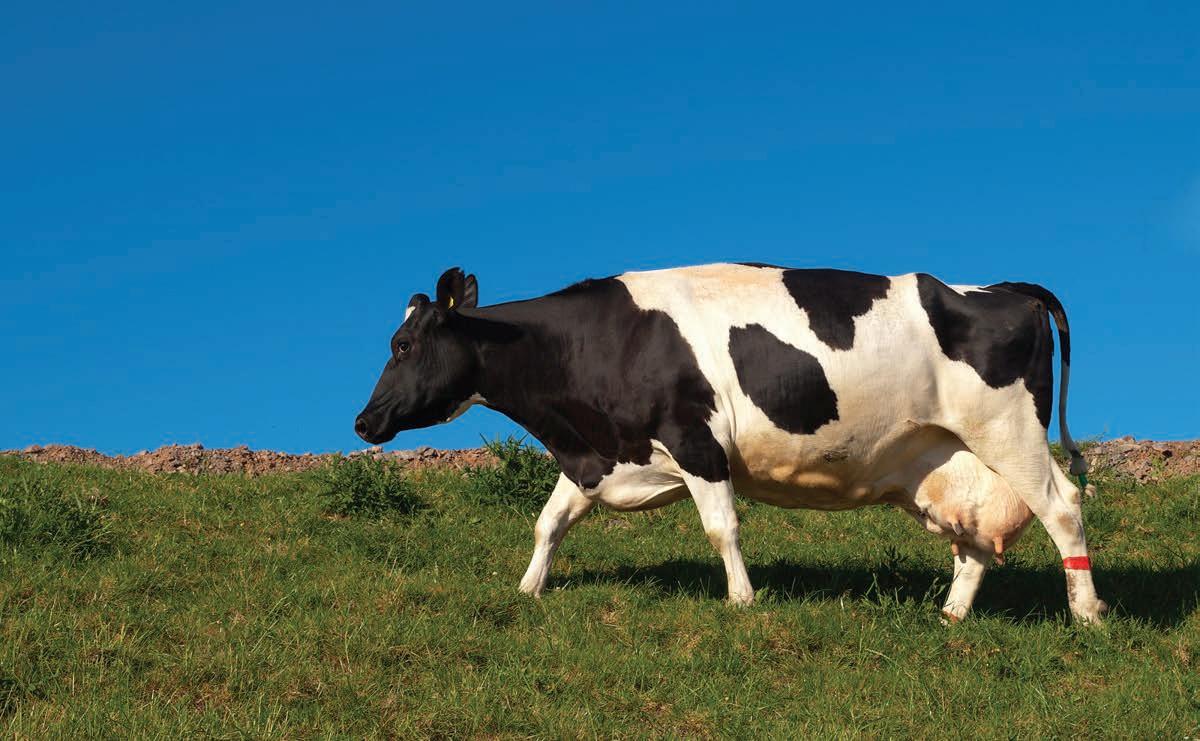
Association seeks to rename influenza strain affecting cattle
BY ELIZABETH BOBENHAUSEN Poultry Times staff ebobenhausen@
poultrytimes.com
GAINESVILLE,
Ga. —
With the recent species jump of highly pathogenic avian influenza into some of the nation’s dairy cattle, the American Association of Bovine Practitioners seeks to rename this strain of flu from HPAI to BIAV or Bovine Influenza A Virus.
The association notes that HPAI H5N1 is a different syndrome in cattle as it is not causing the high mortality and morbidity seen in bird species. The organization noted these key details and recommended that the virus not be called “HPAI in cattle” or “bird flu in
cattle.” According to a letter released by AABP, the company has joined forces with veterinarians, state and federal organizations, diagnostic test centers and other animal health administrators to combat the rising threat of avian influenza in cattle. The AABP suggested that this virus be called BIAV in messaging and resources.
“We encourage other organizations, state animal health officials, diagnostic labs and state and federal agencies to use this name so that we can be consistent with our messaging and better distinguish the disease syndrome in cattle from the pathogenesis observed in birds,” the association added. “We be -
lieve it is important for the public to understand the difference to maintain confidence in the safety and accessibility of beef and dairy products for consumers.”
The AABP is an international organization that includes 5,000 veterinarians, veterinary technicians and veterinary students interested in bovine (cattle) medicine. The vison of AABP is “is to serve society as leaders in cattle health, welfare, and productivity.” The mission of the AABP is to “provide support, continuing education, and advocacy for current and future veterinary professionals and the cattle they serve.” The association was established in 1965 as a nonprofit organization.
“We believe it is important for the public to understand the difference to maintain confidence in the safety and accessibility of beef and dairy products for consumers.”
POULTRY TIMES POULTRYTIMES.COM 9
------
PT
VIEWPOINT

Trade mission to South Korea results in $67M projected sales
USDA working to diversify U.S. export opportunities
WASHINGTON — A recent USDA-sponsored agribusiness trade mission to the Republic of Korea (South Korea) proved to be a tremendous success for nearly 50 U.S. agribusinesses, cooperators, trade associations, and state departments of agriculture looking to grow and diversify U.S. exports to East Asia.
Recapping the successes of the trade mission, USDA’s Under Secretary for Trade and Foreign Agricultural Affairs Alexis M. Taylor said, “During the trade mission to South Korea, U.S. exporters conducted more than 600 meetings with potential importers as they look to expand the variety of American products available to Korean consumers. As a result of those productive meetings, U.S. companies reported $67 million in projected 12-month sales to South Korea.”
Taylor added that when it comes to U.S. food and agricultural imports, South Korea is a powerhouse buyer. It ranks as the United States’ fifth largest singlecountry export market. Just last year, exports of U.S. agricultural and ag-related products to South Korea totaled a little more than $8 billion.
Those unfamiliar with the export potential to South Korea may be surprised by the numbers, but to Taylor and the team at USDA’s Foreign Agricultural Service the numbers are what make it an ideal market. Such a substantial export

USDA FAS
Alexis M. Taylor, USDA under secretary for trade and foreign agricultural affairs, provided welcoming remarks at a recent plenary session for the USDA-sponsored agribusiness trade mission to South Korea.
market is especially important in the current trade landscape as the Biden-Harris Administration and USDA work to diversify markets for U.S. agricultural products, grow exports, and improve the bottom line for America’s farmers, ranchers, and agri-businesses.
While South Korea is geographically smaller than New York state, it is densely populated with 50 million people, which is more than six times greater than the population of New York City
(the most populous city in the United States). With little agricultural land, South Korea is reliant on food and agriculture imports, and the United States is well positioned and ready to help meet the demand of South Korea’s large population.
During a media call with Taylor and leaders from the state departments of agriculture, Arkansas Secretary of Agriculture Wes Ward said, “From an Arkansas perspective, we were certainly de-
lighted to participate in the trade mission for multiple reasons, including what Under Secretary Taylor mentioned about market diversification. We’re trying to increase our exports and diversify our markets here in Arkansas, and that certainly was a big topic for this trade mission.”
As a part of the trade mission, Taylor and members of the U.S. delegation also visited Garak Wholesale Agricultural Market, Traders Wholesale Club,
POULTRY TIMES POULTRYTIMES.COM 10
POULTRY TIMES
POULTRY TIMES
USDA FOREIGN AGRICULTURAL SERVICE
COMMENTARY BY
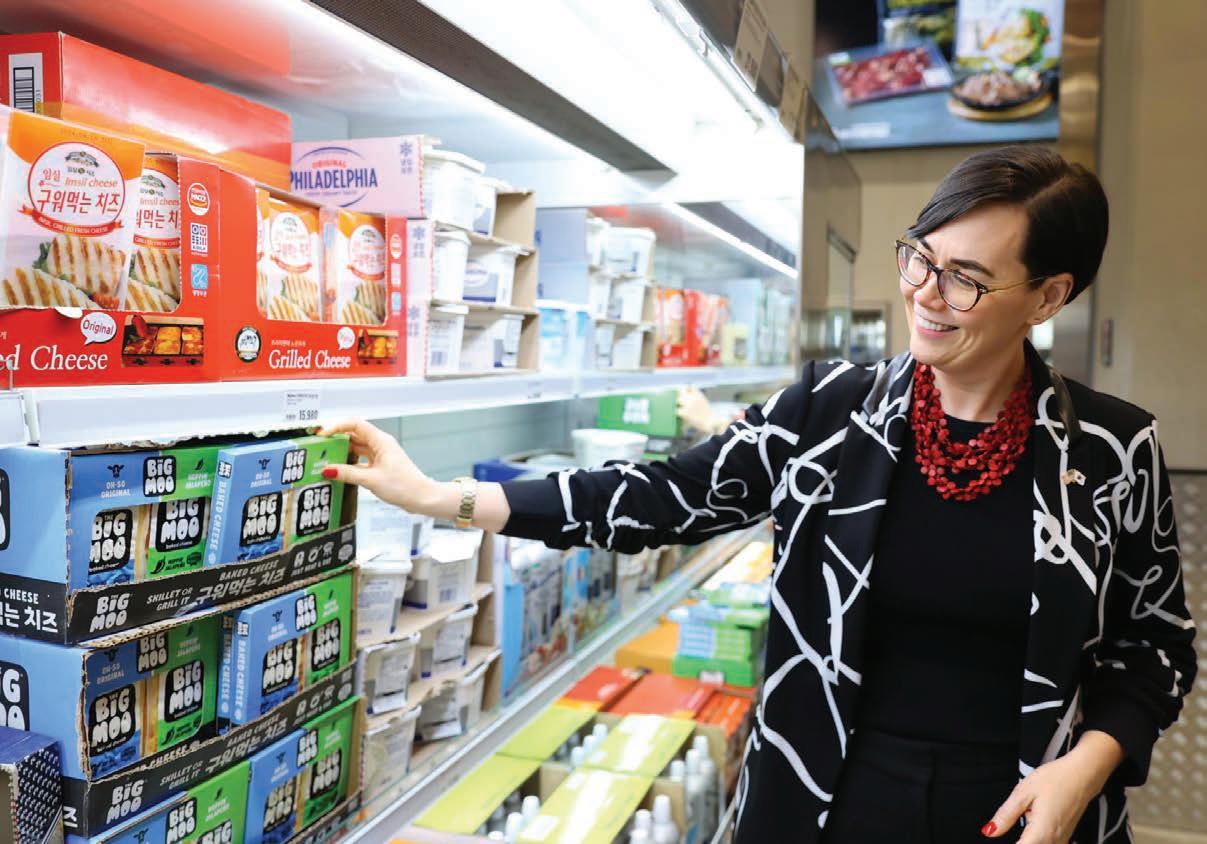
USDA FAS
Visiting grocery stores overseas and seeing U.S. foods and ingredients is one of the greatest parts of a USDA agribusiness trade mission, like the U.S. products for sale in South Korea. American food and agricultural products available to foreign consumers epitomizes U.S. agriculture exports and the benefits of trade, USDA’s Foreign Agricultural Service notes.
and Seoul Brewery, where they saw firsthand U.S. products lining the shelves and featured on the menu. At the Garak market, Taylor cooked up some Korean barbeque with U.S. pork. Seeing how local storeowners and restaurateurs use U.S. foods and agricultural products reaffirm that Korean consumers have a positive view of and fervent desire to purchase high-quality and diverse foods and ingredients that America offers.
The trade mission also provided an opportunity for discussions between the USDA and the South Korea Ministry of Food and Drug Safety, Ministry of Foreign Affairs, Ministry of Agriculture, Food and Rural Affairs, and Ministry of Trade, Industry and En-
“During the trade mission to South Korea, U.S. exporters conducted more than 600 meetings with potential importers as they look to expand the variety of American products available to Korean consumers.”
ergy, as well as with U.S. and Korean agribusiness leaders.
A future-facing spotlight of the week was a visit with Korea National University of Agriculture and Fisheries students. There, Taylor spoke with the next gen-
eration of Korean farmers and agricultural leaders about topics on which they are equally passionate, including ways the agriculture industry can help mitigate climate change and adapt to weather changes, infrastructure
enhancements to help modernize agricultural production and trade, the aging farmer populations in the United States and South Korea, and their shared hopes for young people to enter the field of agriculture.
POULTRY TIMES POULTRYTIMES.COM 11
reasons, mission, U.S.Club,
sales
FAS affairs, USDA-sponsored
BUSINESS

POULTRY TIMES

Gold Creek Foods sues Dawsonville, Ga.
BY ELIZABETH BOBENHAUSEN Poultry Times staff ebobenhausen@poultrytimes.com
GAINESVILLE, Ga. — Gold Creek Foods has filed a lawsuit against the city of Dawsonville, Ga., and seven of its officials due to extra taxes or surcharges being added to its expenses, the company announced.
In a press statement, the company said it plans to “dispute millions of dollars of assessed surcharges and penalties for allegedly high-volume discharges of wastewater and sewage from its poultry-processing plant that purportedly violate thresholds for pollutants in the city’s ordinance.”
The complaint also states that the company is asking the court to intervene on its behalf to stop the city from turning off its water.
The complaint was filed on April 12, 2024, in the U.S. District Court for the Northern District of Georgia, Gainesville Division. The
defendants are as follows: Dawsonville Mayor John Walden, four city councilmen, City Manager Bob Bolz and Utilities Director Jacob Barr.
The Gold Creek Foods complaint also noted, “that penalties, fees and fines assessed by the city are erroneous under the city’s own ordinance and unconstitutional under the United States and Georgia constitutions. Furthermore, the complaint says that turning off the water, terminating sewer service, and continuing to assess fines would irreparably harm the company’s reputation, market share, employees, and its customers.”
The company says that the charges are illegal and unconstitutional. Gold Creek Foods says the city is using the wrong location to examine the sewer water and does not offer an avenue to appeal the penalties.
Stephen E. O’Day with Smith Gambrell & Russell, the Atlanta law firm representing Gold Creek said, “The city of Dawsonville isn’t complying with its own ordinance or the U.S.
or Georgia constitutions in assessing these surcharges and penalties. Gold Creek is the only person or entity whose sanitary sewer discharges are sampled by the city, and against whom millions of dollars in fines and penalties are assessed as a result. The city has left us no choice but to file this complaint because they’ve been unwilling to allow us to investigate their results or to appeal their process, nor are they complying with the EPD permit or other laws.”
“We’re a committed community partner,” Mark Sosebee, Gold Creek Foods CEO, said. “We’ve invested millions of dollars in this facility to ensure environmental compliance, and we’re dedicated to providing a great environment for our employees and, of course, clean water for this community. The actions of the city of Dawsonville are very disappointing and, unfortunately, we now must seek relief from the court because the city refuses to work with us to find a solution.”
POULTRY TIMES POULTRYTIMES.COM 12
PT
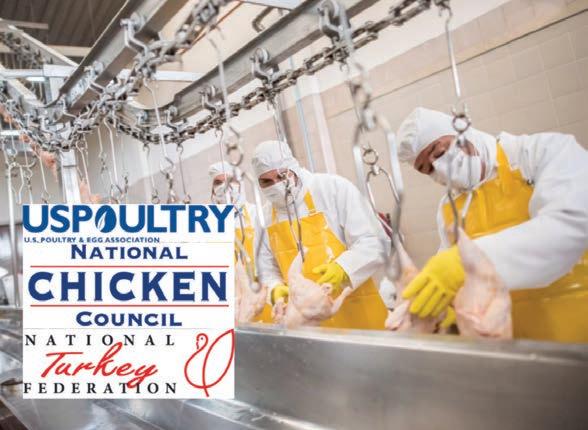
Joint Poultry Industry Safety Awards accepting applications
TUCKER, Ga. — The Joint Poultry Industry Safety Award Program is currently accepting applications from poultry industry facilities with outstanding safety programs. The award program is open to National Chicken Council, National Turkey Federation and U.S. Poultry & Egg Association members with poultry processing plants, further processing facilities, egg processing plants, hatcheries, feed mills, animal support services, and rendering facilities that, through the implementation of innovative and effective programs, have injury and illness rates below the industry average for three consecutive years.
Based on the latest data available from the Bureau of Labor Statistics, the slaughter and poultry processing OSHA’s total recordable illness and injury rate for 2022 was 5.7 cases per 100 full-time workers. The 2022 rate of 5.7 represents an outstanding 75 percent decrease from 1994.
“Prioritizing the safety and wellbeing of employees is an ongoing commitment for the poultry industry. These dedicated employees play a crucial role in the poultry industry’s mission to produce nutritious and affordable food, and the in-
dustry is committed to investing in processes and procedures to diminish workplace hazards to protect our people,” Allan Foy, corporate safety director, Farbest Foods, and chair of the Joint Industry Safety and Health Council, said. “Progress is made year-over-year in reducing illness and injury and, over the last few decades, has resulted in significant achievements in protecting worker safety.”
The Joint Industry Safety and Health Council is made up of members from NCC, NTF and USPOULTRY. Collectively, the three organizations represent 95 percent of the nation’s poultry products, and their members generate more than 1.3 million total U.S. jobs.
For award program rules, regulations and application forms, visit https://www.uspoultry. org/programs/employee-safety/ award-programs/. The application deadline is May 24.
The annual awards will be presented during the National Safety Conference for the Poultry Industry, Aug. 19-21, at the Hilton Sandestin Beach Golf Resort & Spa in Destin, Fla.
Meat Institute unveils new logo and brand identity
WASHINGTON — Celebrating nearly 120 years of leadership on behalf of America’s meat companies, the Meat Institute (formerly the North American Meat Institute) has unveiled
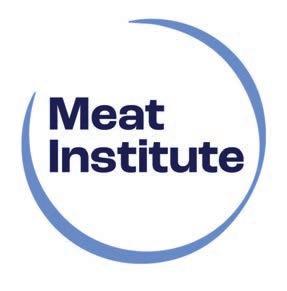
its new logo and brand identity reflecting its dynamic, forwardlooking approach to ensuring meat remains at the heart of nourishing the present and sustaining the future, the group announced.
The new logo evokes the shape of a plate, with the open frame indicating transparency and inclusiveness. The varying thickness of the plate’s border brings a sense of movement, signaling constant evolution and pursuit of continuous improvement.
The new brand identity will be featured this week at the Annual Meat Conference March 18-20 in Nashville, Tenn.
“Sustaining meat’s future is central to the Meat Institute’s mission and vision, building on our 120 years of leadership and meat’s centuries of contributions to healthy diets and strong communities,” Julie Anna Potts, Meat Institute president and CEO, said. “Our updated logo is fresh, open, and keeps meat at the very center of nourishing today and sustaining tomorrow.”
In addition to the new logo, elements of the Meat Institute’s brand evolution include:
• New brand colors:
The logo is composed of a dark blue that provides solidity and weight to the association’s name and history, with a fresh new Meat Institute Blue serving as the primary framing color. New brand colors also include an energetic pastel blue and a modern orange accent that serves as an updated nod to the association’s previous maroon brand color.
• New brand purpose statement:
The Meat Institute’s brand identity will include a new tagline that summarizes the association’s mission and purpose — “Nourishing Today. Sustaining Tomorrow.”
visit www.meatinstitute.org.

for the 2024 USPOULTRY Clean Water Awards
TUCKER, Ga. — The U.S. Poultry & Egg Association is currently accepting applications for the 2024 Clean Water Awards. The awards recognize outstanding performance of wastewater treatment plants that operate at poultry and egg processing facilities.
Winners will be announced at USPOULTRY’s Environmental Management Seminar to be held Sept. 19–20, at the Hilton Sandestin Beach Golf Resort & Spa in Destin, Fla.
“Poultry and egg companies demonstrate an ongoing commitment to being good stewards of our environment and the natural resources in which we have been entrusted,” Mikell Fries, Claxton Poultry Farms, and USPOULTRY chair, said. “These companies are doing an excellent job in operating sustainable and efficient wastewater treatment facilities, proving their dedication to being leaders in good environmental practices. Once treated, the water used in poultry and egg processing is returned to the environment in exceptional condition, continually discharging effluent below the limits set in permits. USPOULTRY is pleased to sponsor this annual award program that features these outstanding facilities.”
The annual program presents awards in two categories — full treatment and pretreatment. Full treatment facilities are those facilities that fully treat their wastewater prior to discharging the effluent into a receiving stream or a land application system. Pretreatment facilities are those facilities that
(Continued on next page)
POULTRY TIMES POULTRYTIMES.COM 13
For more information,
Applications being accepted
(Continued from previous page)
discharge pretreated effluent to publicly owned wastewater treatment facilities for further treatment. Any USPOULTRY member company is eligible to submit up to three nominees in each category. Facilities that have previously won the award may not be renominated for five years.
The deadline for submitting applications is June 21.
An evaluation committee, consisting of professional engineers and academia, will review the applications and select semi-finalist facilities in both categories. Award recipients will be selected after the evaluation committee completes a site visit, where each semi-finalist will have an opportunity to showcase their facility. Award recipients will receive a trophy, be profiled on the USPOULTRY website, and receive assistance from USPOULTRY in publicizing the award at a local, regional, and national level.
The winners of the 2023 Clean Water Awards were WayneSanderson Farms’ broiler pro -
cessing facility in Tyler, Texas, in the full treatment category and Tyson Foods’ par-fry facility in Russellville, Ark., in the pretreatment category. Honorable mention with distinction awards in the full treatment category were presented to Keystone Foods in Albany, Ky., and Tyson Foods in Union City, Tenn. Tyson Foods in North Little Rock, Ark., was recognized with an honorable mention with distinction award in the pretreatment category.
For an application form, visit https://www.uspoultry.org/programs/environment/.
MosquitoMate announces EPA registration for its mosquito control solution
LEXINGTON, Ky. — MosquitoMate Inc. announces that the U.S. Environmental Protection Agency has granted registration for its new product named “WB1

Males.” This new mosquito control pesticide represents a significant advancement in mosquito control, the company notes.
“The timing is critical, because we are experiencing more disease and invasive mosquitoes, while at the same time, we have fewer tools to fight mosquitoes,” said Dr. Stephen Dobson, president of MosquitoMate Inc. The WB1 pesticide specifically targets the Aedes aegypti mosquito, commonly known as the Yellow Fever mosquito.
This new Wolbachia pesticide consists of rearing and releasing male mosquitoes that are infected with a bacterium named “Wolbachia.” The approach does not use chemicals or genetic modification. Only female mosquitoes bite, while male mosquitoes do not bite or transmit disease-causing pathogens. The Wolbachia-bacterium causes male mosquitoes to be effectively sterile, through a natural mechanism known as ‘Cytoplasmic Incompatibility’ (CI). Those female mosquitoes that mate with the Wolbachiainfected males lay eggs that do not hatch, causing the mosquito population to decline without the need to use chemicals, the company added.
MosquitoMate began working with the EPA to register the new pesticide more than a decade ago. The Wolbachia-infected male mosquitoes are known as WB1 males, and MosquitoMate has performed successful field studies using the WB1 males in California, Florida and other locations, the company said, adding that, as an example, an independent review by the Centers for Disease Control reported the reduction of a Texas Ae. aegypti population by more than 90 percent following the release of WB1 males. With the EPA’s new registration, MosquitoMate can now begin to roll out the WB1 males nationally, including Caribbean and Pacific territories, which have traditionally been heavily impacted by diseases transmitted by the Yellow Fever mosquito, the company said.
Chore-Time names Marker new human resources manager
MILFORD, Ind. — Jennett
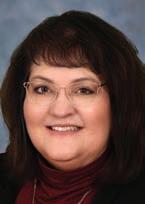
Marker has been named human resources manager for ChoreTime, according to Michael J. Kissane, executive vice president and chief administrative officer for CTB Inc. In her new role, she will provide human resources support for the Milford, Ind.; Decatur, Ala.; The Netherlands, and Poland Chore-Time locations.
Prior to joining CTB, Marker gained 12 years of human resources experience serving, most recently, as a human resources coordinator for 12 locations of a non-profit mental health center in northern Indiana. She also held multiple human resources positions for a large distribution center where she worked for over five years.
Marker holds two certifications: Society of Human Resources Management Certified Professional (SHRM-CP) and Critical Incident Stress Management (CISM) from the International Critical Incident Stress Foundation.
Marker is a native of Albion, Ind., where she still resides.
Case Farms facility reaches 1 million hours without lost-time accident
GOLDSBORO, N.C. — Case Farms achieved a new safety milestone on March 30 after its Goldsboro processing facility reached 1-million-man hours without experiencing an Occupational Safety and Health
(Continued on page 16)

POULTRY TIMES POULTRYTIMES.COM 14
Marker

Administration (OSHA) recordable lost-time accident.
“This is a huge accomplishment, and I could not be any prouder of our team!” said Jared Birchum, complex safety manager at the Goldsboro location.
“Congratulations to the entire Goldsboro team on achieving this milestone. This is no easy task and would not be accomplished without total commitment from each team member to providing a safe workplace. There is no doubt that our safety success will continue with the efforts this team has made towards improving our safety culture,” said Tyler Parlier, regional safety manager of North Carolina Divisions.
During the last year, the Morganton Complex has reached the 2 and 3 million man-hour mark. The Winesburg facility also reached the 2 million man-hour mark earlier last year and the 3 million man-hour mark in late 2023.
“As we prepare to celebrate one million safe work hours at the Goldsboro division, we will continue to keep safety at the fore-


front of our business and strive for the next accomplishment,” said Eldredge Chandler, assistant plant manager of the Goldsboro facility. “Safety is the most important part of our business, and we are ecstatic to achieve this tremendous milestone. Thank you all for being committed to safety and working together to achieve this goal.”
An OHSA recordable lost-time accident occurs when an employee receives an injury where a doctor has determined that the person cannot come to work until fully recovered. Typically, it takes about five to six months for a facility to reach 1-millionman hour without a lost-time accident.
In addition to efforts made by employees, Case Farms notes that it implements a companywide worker safety program comprised of core elements that are essential to achieving and main-

taining a strong safety and health program.
Perdue Farms & Alliance for the
Chesapeake Bay partner on tree planting
SALISBURY, Md. — The Alliance for the Chesapeake Bay and Perdue Farms recently celebrated the 54th Earth Day and its strong partnership by planting more than 300 trees on a family poultry farm in Quarryville, Pa. This partnership, announced in October 2023 with funding from the National Fish & Wildlife Foundation, has already made substantial strides to positively impact the environment on farms in the Chesapeake Bay Watershed, meeting with over a dozen farms that are now moving forward with enhancements to increase sustainability on-farm.




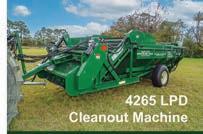

“Earth Day is a reminder of our obligation to future generations to protect and preserve our communities, like the beautiful Chesapeake Bay watershed. To go beyond good stewardship and make a big impact, it takes all of us working together,” said Drew Getty, vice president of environmental sustainability at Perdue Farms. “That’s why this partnership is so mission critical. Collectively, we can make sustainable practices more accessible and approachable to anyone who works with Perdue Farms, which ultimately advances the work to protect our natural resources.”
Since 2017, the Alliance has worked alongside agricultural supply chain corporations, like Perdue Farms, and their farm providers to accelerate conservation efforts throughout supply chains in the Chesapeake Bay watershed. This approach allows farms to increase long-term sustainability while elevating environmental standards throughout the agricultural industry.
“The Alliance is excited to partner with Perdue. Their commitment to helping farmers reach conservation standards that go above state regulations is exciting,” said Brittany Smith, agriculture project manager at the Alliance for the Chesapeake Bay. “Through this collaboration and Perdue’s investment in conservation, the team can build capacity for technical support and offer financial assistance for Perdue’s independent-contract growers, often with no out-of-pocket costs to the farmers. Perdue’s leadership and commitment to sustainability elevates environmental standards throughout the agricultural industry.” (Continued
The partnership has big plans for additional on-the-ground projects throughout the rest of 2024 that will help reduce energy costs, minimize disease risk, increase carbon sequestration, and boost local air and water quality. This includes providing technical and financial support to install six manure storage sheds and/or compost barns and seven tree planting installations within pastures and around poultry barns, planting 1,800+ trees on farms in the region this spring, and leveraging various state and federal cost-share programs to accelerate conservation practice implementation and effectively stretch the grant dollars further.
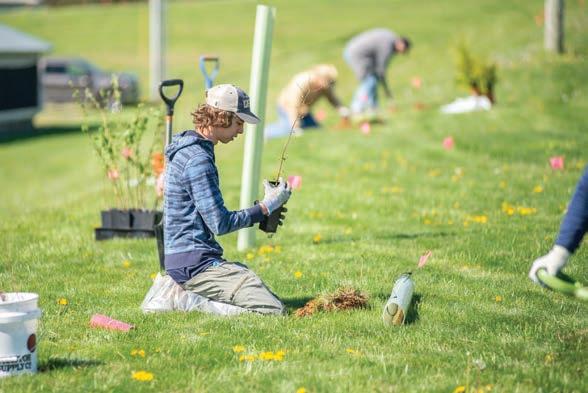
7300 Poultry House Blower Call us today to set up a free demo near you.
page
POULTRY TIMES POULTRYTIMES.COM 16
from
14)
Dairy farmers taking extra precautions from threat of HPAI
BY ELIZABETH BOBENHAUSEN Poultry Times staff
ebobenhausen@ poultrytimes.com
GAINESVILLE, Ga. — Dairy farmers across the United States are taking extra precautions in protecting their cattle from the highly pathogenic avian influenza virus. While it may seem unusual for cattle to contract bird flu, it has happened currently in seven states including Texas, Kansas, Ohio, Michigan, Idaho, New Mexico and now North Carolina.
Reuters caught up with seven dairy farmers in five states to learn about how they are protecting their animals. According to their report, three of the seven farmers are surpassing government recommendations. Karen Jordan has more than 200 cattle on a farm in North Carolina. She said they, “think of our farm now as a gated community for cows. Only the most essential person can get past the gate.”
Biosecurity measures were already being taken even before the
breakout of bird flu. Jordan limited the number of visitors that came through the farm at the risk of spreading the disease through bird feces. She also cut down 40 small trees so birds would not be drawn to the farm.
Reuters also spoke to farmers in other states without confirmed cases. “In Fort Branch, Ind., Steve Obert, 61, is requiring drivers to spray truck wheels with disinfectant before he allows them on his farm. He raises about 1,200 cows that produce milk for Dairy Farmers of America, a cooperative of more than 6,000 farms,” they reported, adding that, “In Rockford, Ill., 43-year-old farmer Brent Pollard, who supplies milk to cooperative Prairie Farms, is keeping a calf he bought for his daughter from Wisconsin in isolation for 21 days.”
The USDA notes that the transmission of bird flu from animals to humans is rare. However, there have been two confirmed cases of avian influenza in humans in the United States, stemming from this recent dairy cattle outbreak.
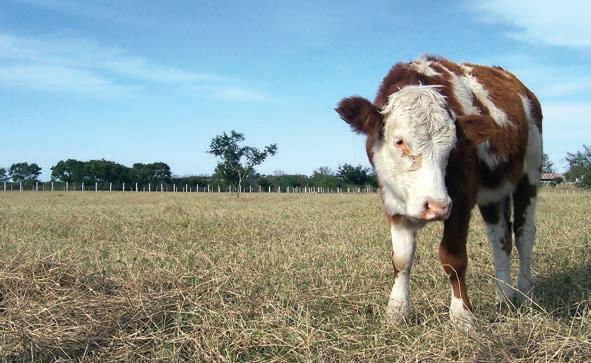
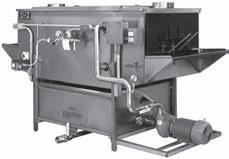



Paid Advertorial WeighTech... Serving the
Poultry and Seafood Industries KUHL CORP. FLEMINGTON, NJ 08822 – USA www.kuhlcorp.com hyk@kuhlcorp.com HATCHING EGG WASHERS HATCHER TRAY WASHERS COUNTERS SEPARATORS UNSTACKERS REDUCES BACTERIA COUNT TO NEAR ZERO POULTRY TIMES POULTRYTIMES.COM 17
Meat,
PT
YOUR FLOCK’S WATER QUALITY WITH A water line cleaner and scale remover that boosts the health and performance of your flocks
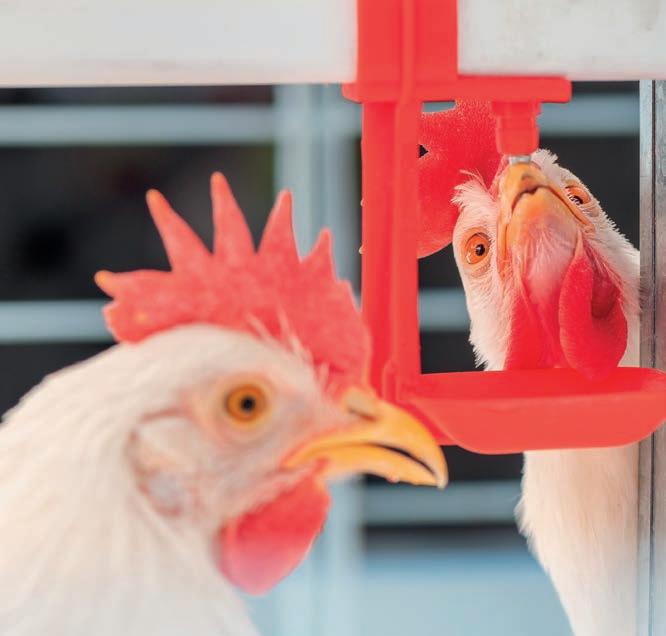
Norfolk Southern reaches $600M settlement over 2023 derailment
BY ELIZABETH BOBENHAUSEN
Poultry Times staff
ebobenhausen@ poultrytimes.com
EAST PALESTINE, Ohio —
Norfolk Southern Corp. has announced that the company has reached a $600 million settlement in regard to the 2023 train derailment in East Palestine, Ohio. The court has not yet permitted this settlement, however, if approved it will cover any class action demands within a 20-mile radius of the derailment. Also, it will cover any personal injuries of residents of who wish to participate within a 10-mile radius.
In a statement, the railroad company said, “this agreement does not include or constitute any admission of liability, wrongdoing, or fault.”
Advantages
✓ Helps maintain unobstructed flow
✓ Effective and economical – simply apply with a standard medicator at 1:128
✓ Removes the formation of mineral scale architecture, the scaffolding for microbial growth – a specialty combination chemistry from Enviro Tech

In March 2023, Norfolk Southern vowed to help residents with any long-term issues they may be anxious about, such as: drinking water, house values and healthcare. Programs have been instituted for drinking water and home values. Additional money will be provided for businesses that were harmed due to the derailment.
According to Fox Business, attorneys Seth Katz, Elizabeth Graham, Jayne Conroy and T. Michael Mor-
gan represent Norfolk Southern Corp.
“This resolution comes shortly after the one-year anniversary of the disaster and will provide substantial compensation to all affected residents, property owners, employees and businesses residing, owning or otherwise having a legal interest in property, working, owning or operating a business for damages resulting from the derailment and release of chemicals,” the company said.
Along with the settlement, Norfolk has made other payments, including:
• $104 million in community assistance to East Palestine and the surrounding areas in Ohio and Pennsylvania, including $25 million for a regional safety training center, $25 million in planned improvements to East Palestine’s city park, $21 million in direct payments to residents, and $9 million to local first responders.
• $4.3 million to support upgrades to drinking water infrastructure.
• $2 million for community-directed projects.
• $500,000 grant for economic development; and ongoing support to the community through the Family Assistance Center and programs such as the Interim Value Assurance Program.

Norfolk Southern Corp. announces at $600 million settlement regarding class action demands stemming from the 2023 train derailment in East Palestine, Ohio.
POULTRY TIMES POULTRYTIMES.COM 18
sales@arxada.com 500 Winmoore Way, Modesto, CA, 95358 www.envirotech.com
SAFEGUARD
PT
Norfolk Southern photo
Biosecurity steps to keep birds healthy
WASHINGTON — USDA’s Animal & Plant Health Inspection Service offers the following steps to take to protect birds and maintain biosecurity practices - following the basic three-step guideline to look, report and protect.
• Keep your distance
Restrict access to your property and your birds.
Consider fencing off the area where you keep your birds and make a barrier area if possible. Allow only people who take care of your birds to come into contact with them.
Do not let visitors bring any of their birds near your flock.
Game birds and migratory waterfowl should not have contact with your flock because they can carry germs and disease.
• Keep it clean
Wear clean clothes. Scrub your shoes with disinfectant.
Wash your hands thoroughly before entering your bird area.
Clean and disinfect equipment that comes in contact with

your birds or their droppings, including cages and tools.
Remove manure before disinfecting.
Properly dispose of dead birds.
• Don’t haul disease
Car and truck tires, poultry cages and equipment can all harbor germs. If you travel to a location where other birds are present, or even to a feed store, be sure to clean and disinfect these items before you return to your property.
To prevent, don’t mix young and old birds or birds from different species or different sources.
• Don’t borrow disease from your neighbor
Introducing EAGAN FAST TRACK
Wall Vents


Do not share equipment, tools or supplies with your neighbors or other bird owners.
And never share items such as wooden pallets or cardboard egg cartons because they are porous and cannot be adequately cleaned and disinfected.
• Know the warning signs of infectious bird disease
Many bird diseases can be difficult to diagnose. The list below includes some of the things to look for that signal something might be wrong with your birds.
1. Sudden increase in bird deaths in your flock.
2. Sneezing, gasping for air, coughing and nasal discharge.
3. Watery and green diarrhea.
4. Lack of energy and poor appetite.
5. Drop in egg production or soft-or thin-shelled misshapen eggs.
6. Swelling around the eyes, neck and head.
7. Purple discoloration of the wattles, combs and legs.
8. Tremors, drooping wings, circling, twisting of the head and neck, or lack of movement.
Early detection of signs is very important to prevent the spread of disease.
• Report sick birds
Don’t wait to report unusual signs of disease or unexpected deaths among your birds. Contact your local Cooperative Extension agent, veterinarian, poultry diagnostic lab, or USDA Veterinary Service office (which can be reached at 866-5367593). This toll-free hotline has veterinarians on hand to help. More information can be obtained at http://healthybirds. aphis.usda.gov.

FAST TRACK Wall Vents
Our new Fast Track Wall Vent (U.S. Patent No. 11,33,392) takes the concept of a wall vent to the next level. It comes fully assembled right out of the box, goes up very quickly and is very competitively priced.
Vent
Δ Available with an Aluminum or UV stabilized PVC frame Δ Superior performance Δ Integrated track cord tensioner/locator Δ Integrated winter latching system

Δ Cord guide included along with installation jig to speed up installation


Δ Available in 8”,10’, 12”, 14” heights with custom lengths available
Δ Perfect for retrofit applications-the wall vent is surface mounted to compensate for framing irregularities and can be ordered to fit virtually any opening
Δ Orders come bulk-packed in palletized gaylords to make it easier and faster on installation crews
POULTRY TIMES POULTRYTIMES.COM 19
Wall
Features
602 EAGAN ROAD, P.O. BOX 620 BLACK ROCK, AR 72415
Aluminum Framed Fast Track Wall Vent UV Stabilized PVC Framed Wall Vent Cord Guide Installation Tool
------
TAMU team working with Homeland Security to protect U.S. food supply chain
BY SUSAN HIMES Texas A&M University
COLLEGE STATION, Texas
The disruption of the food supply chain during the first few years of COVID made Americans aware of how critical the ability to move agricultural products reliably, safely and efficiently is, according to Texas A&M AgriLife experts.
A Texas A&M University AgriLife-led team is doing its part to protect the U.S. food supply chain from future threats that are accidental, intentional or an act of Mother Nature. The project, Systematic Mapping of Cross-Border Threats to Enhance U.S. Agricultural Security, began in September 2023, and will continue through August, 2025.
Leading the team is principal investigator Dr. Zhihong
the Texas A&M College of Agriculture and Life Sciences Department of Agricultural Leadership, Education and Communications, Bryan-College Station.

“Our goal is to be able to deter, prevent, thwart, respond to and recover from any harmful consequences that may arise in the agricultural supply chain,” Xu said.
“Texas plays a crucial role in all of this,” she added. “We are right at the border and agriculture is a massive part of our economy — not to mention how it impacts our environment and our daily lives. From the food we eat to the economic boost
this big picture.”
Identifying, assessing threats
Concentrating on identifying and assessing potential threats along America’s agricultural food supply chains, this research is supported by a Department of Homeland Security Center of Excellence within Texas A&M AgriLife Research known as Cross-Border Threat Screening and Supply Chain Defense, CBTS. All results are being shared with the Department of Homeland Security.
“To prepare the country for future potential threats and situations that could cause disruptions, the team is pioneering research to enhance the understanding of how cross-border threats can affect agricultural and food supply chains,” said Dr. Gregory Pompelli, CBTS direc
“These threats pose significant challenges to the intricate and interconnected supply chain networks that oversee massive volumes of trade critical to the country’s economy and food security,” Xu said. “Because of the complex and interdependent interactions at national and international levels, these threats can impact supply chain networks’ integrity, resilience and security.”
Project primary objectives
The project conducts a systematic approach to analyzing threats to agricultural/food security. By synthesizing existing knowledge through systematic mapping, the team aims to identify knowledge gaps, prioritize research areas and promote collaboration to develop a holistic perspective on food and agricultural defense and security, she

The systematic mapping study objectives of the program are:
• Identify factors affecting agricultural security.
• Identify impact of threats on agricultural security.
• Develop an information system for research assistance.

The objectives of the conferences are:
• Identification of agricultural security content experts.
• Organization and facilitate future research, especially identified research gaps on the topic.
TAMU project team
“By leveraging interdisciplinary approaches that combine social science and agricultural sciences, we aim to shed light on the vulnerabilities of the chains and strengthen the preparedness levels against such disruptions,” Xu said. “Our goal is not only to contribute to the academic body of knowledge but also to provide actionable insights that can help mitigate risks to the U.S. agricultural and food sectors.”
She said through their pioneering research, the team strives to
POULTRY TIMES POULTRYTIMES.COM 20
Brand new flock. Same old litter? 800-448-4723 | info@ImpactPoultryProducts.com ImpactPoultryProducts.com Reduce disease exposure. Lower ammonia.Improve litter quality. IMPACT-P(NA) Not with litter-biotic.
Xu
enhance the understanding of how cross-border threats can affect U.S. agricultural and food supply chains, thereby supporting efforts to safeguard these critical components of national and global well-being.
Working alongside Xu are project co-principal investigators Baker; Dr. Bruce Herbert, professor, Department of Agricultural Leadership, Education and Communications; Dr. Jaehyun Ahn, research scientist, Department of Agricultural Leadership, Education and Communications; and Dr. Ashlynn Kogut, associate professor, Department of Teaching, Learning and Culture.
Xiting Zhuang is the postdoctoral research associate for the project; Shuai Ma and Anjorin Adeyemi are the doctoral graduate research associates. Dr. Donnalee Sullins, instructional assistant professor, Department of Hospitality, Hotel Management and Tourism, serves as the conference organizer.
Susan Himes is a writer and media relations specialist for Texas A&M AgriLife.

The U.S. food supply chain is a complex and interdependent system, and a Texas A&M University AgriLife-led team is analyzing threats to that chain with the Department of Homeland Security.
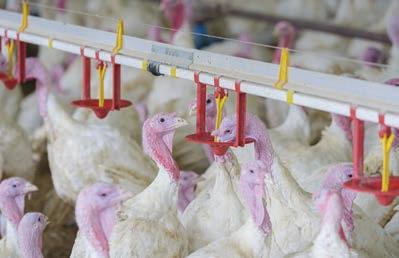


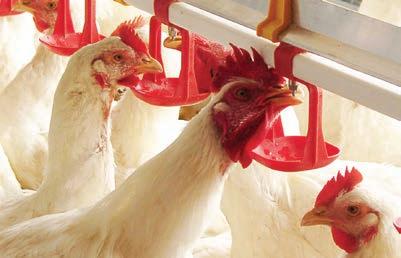




POULTRY TIMES POULTRYTIMES.COM 21 800-845-3374 FarmerBoyAg.com For All Your Poultry Watering Needs CONTACT US to Order Your Lubing System Today!
Sam Craft/Texas A&M AgriLife

Groups ask EPA to reject Calif. zero-emission locomotive plan
BY ELIZABETH BOBENHAUSEN Poultry Times staff ebobenhausen@
GAINESVILLE, Ga. — The National Chicken Council and 90 federal and state agriculture, transportation and infrastructure groups have written a letter to the U.S. Environmental Protection Agency to air their grievances in regard to a new proposal set by California.
These organizations asked the EPA to reject the Golden’s State’s new proposal that would require trains within the state to use emission-free locomotives by 2030. The California Air Resources Board (CARB) asked the EPA to grant them these new regulations.
According to a statement given by the NCC, the regulations would:
Whether it be windrowing to produce a pathogen & insect reduced bedding to grow a top performing flock of BIRDS, or pulverizing litter to make a soft fluffy bedding without the need to decake or add shavings, we have the equipment to fit your operation. We have various models, sizes and options to fit your needs. Keep in mind, our goal is customer service, quality equipment and of course the BIRDS.

1. Require the decommission of locomotives 23 years or older beginning in 2030 and require that new switch, industrial (used by rail customers) and passenger locomotives operate in zero-emission configuration (2035 for new line haul locomotives).
2. Attempt to regulate locomotive emissions by requiring railroads to shut them down when in transit in certain circumstances.
3. Levy annual fees on rail carriers for deposit in accounts that can only be used to comply with the regulations; and impose certain reporting and “administrative payments.”
“If the CARB regulations were authorized by EPA, we believe freight rail carriers and their rail customers would be significantly hindered financially and operationally,” the groups letter noted. “The inevitable increases in trans-
portation costs and introduction of operational inefficiencies for agricultural shippers and receivers would result in food price inflation. The proposed rules would require railroads and rail customers to meet regulatory goals that cannot be reached. Specifically, zero emissions locomotives would have to be purchased to replace the decommissioned locomotives, but such locomotives are not yet commercially viable and won’t be in the foreseeable future. Presumably, battery technology would need to be utilized to meet the zero-emission requirement. While battery powered locomotives have been tested, they are not presently commercially viable primarily due to a limited operating range.”
The letter also supported the Association of American Railroads, the American Short Line and Regional Rail Association. The associations have filed motions in the United States District Court for the Eastern District of California due to the new regulations contradicting a federal law that “gives the Surface Transportation Board (STB) exclusive jurisdiction over the operations and other activities of freight railroads in interstate commerce.”
The court upheld the railroad’s position in an order given Feb. 16, 2024.
POULTRY TIMES POULTRYTIMES.COM 22
MANUFACTUREFARMERS!!! OF: WINDROWING/COMPOSTING & PULVERIZING EQUIPMENT MANUFACTURING, LLC For More Information: 717-445-4922 · CVLITTERPRO@GMAIL.COM
ATTENTION POULTRY
PT
poultrytimes.com
Solar eclipse seen from Gainesville, Ga.

Solar Eclipse 2024: As the nation caught eclipse fever on April 8, Poultry Times captured the phenomenon at Gainesville, Ga.’s Poultry Park. And as you can see from our photo taken around our peak time of 3:04 p.m., a partial solar eclipse is still a LOT of sunlight. The eclipse crisscrossed its way across the continental United States from the southwest to the northeast. Another eclipse is expected in 2045 and is projected to stretch from northern California to Florida.

POULTRY TIMES POULTRYTIMES.COM 23-----
Photo by David B. Strickland Poultry Times
NARA celebrates 2nd annual National Rendering Day
BY ELIZABETH BOBENHAUSEN Poultry Times staff
ebobenhausen@ poultrytimes.com
GAINESVILLE, Ga. — The North American Renderers Association (NARA) was excited to share that the United States observed National Rendering Day on April 21. According to a statement, National Rendering Day was officially put on the calendar as of (2023) by NARA and National Calendar Day. NARA wanted to symbolize the sustainability of the rendering business by putting the national day one day before Earth Day.
“We are honored to celebrate the second Annual National Rendering Day by recognizing all those in the rendering industry and the important work they do for environmental sus -

tainability and food waste and loss prevention,” Kent Swisher, NARA president and CEO, said.
“Rendering upcycles material that would otherwise be wasted and is the purest example of
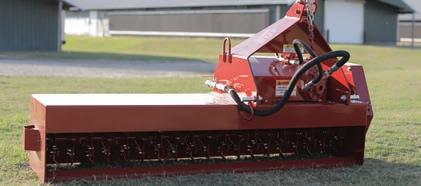



the circular economy. The observance of National Rendering Day … every April 21st is a great way to educate the public on the positive environmental impacts of rendering and why
rendering is such a critical part of food waste and loss prevention.”
NARA describes rendering as, “otherwise wasted material, such as protein, bone, and fat, and even includes used cooking oil (UCO) from restaurants. The rendering process safely, hygienically, and sustainably processes that unused material (the meat we don’t eat) into new products and goods so nothing is wasted. When we render, we convert what would have been food waste into material for use in a multitude of new products such as nutritious pet food and animal feed, industrial goods, and biomass-based diesel. In short, rendering is recycling.”
The association added that, “by celebrating National Rendering Day on April 21st, we bring awareness to the act of reducing and eliminating food waste through rendering. On National Rendering Day we urge the larger community to learn more about what rendering means, how the rendering process works, and why using rendered products is the sustainable choice for consumers.”
Subscribe to the free weekday newsletter: The Poultry Report

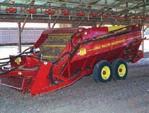
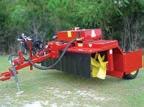

GAINESVILLE, Ga. — Poultry Times has launched a free email newsletter, The Poultry Report.
We have learned that relevant, actionable news and information are absolutely critical to every aspect of the poultry industry as we all navigate very challenging times. With a focus on current industry trends and concise content delivery, The Poultry Report is designed to provide you a single source of industry insight in an easy-to-digest format. Delivered free to your email inbox Monday through Friday. To subscribe, visit https:// www.poultrytimes.com/thepoultryreport.



POULTRY TIMES POULTRYTIMES.COM 24 COMPLETE LINE OF
Industry Leader in Litter Management for over 50 years 912-367-4651 www.lbmfg.com . sales@lbmfg.com LEWIS LITTER BLADE DUMP BODY HOUSEKEEPER THE POULTRY HOUSE BLOWER LEWIS WINDROWER #5 HOUSEKEEPER “DE-CAKING” POULTRY HOUSECLEANER THE LEWIS CRUSTBUSTER AERATE AND CONDITION LITTER. New Product!
Litter Management Equipment
PT

---

American Egg Board presents 47th First Lady’s Commemorative Egg
BY ELIZABETH


Bench Scales
WASHINGTON — During the last 47 years, the American Egg Board and American farmers have presented every first lady of the United States with a commemorative egg during the annual Easter Egg Roll at the White House. First Lady Jill Biden received her commemorative egg during her fourth Easter Egg Roll with a theme of “EGGucation.”
The egg, which this year is actually a series of several eggs, were created by master egg designer Carolyn Bickel of Nashville, Tenn. AEB said she designed the eggs with Dr. Biden’s initiative of education in mind. The eggs describe her desire for educating and inspiring young people. AEB added, “this year’s one-of-a-kind design celebrates the power of education, imagination, and dreams for the future.” The eggs that are given to first ladies are real eggs. This year’s presentation includes two large eggs and a few smaller eggs. The eggs can tell a story of what
the first lady is passionate about. AEB said, “the painted design depicts a spring afternoon underneath the cherry blossoms, where a young girl dreams of all she can be when she grows up, such as an egg farmer, a teacher or president of the United States. An opening at the top of the egg reveals the interior of the egg painted with a vibrant blue sky above the world, symbolizing all that is achievable with a little imagination and the possibilities that come with the pursuit of knowledge. The pullet eggs depict the elements of a high-quality education that will aid this young girl in reaching her full potential.”
Emily Metz, president and CEO of the American Egg Board, noted, “It is an honor and a joy to continue the nearly five-decade tradition of celebrating our nation’s first ladies and causes close to their hearts by gifting the 2024 First Lady’s Commemorative Egg to Dr. Jill Biden on behalf of America’s egg farmers. Eggs are at the center of our cherished Easter and Passover traditions and memories, and we’re honored to celebrate an invaluable part of the season’s festivities at the White House and in homes across the nation.”
For this year’s annual Easter Egg Roll, Braswell Family Farms, Nashville, N.C.; and Sauder’s Eggs, Lititz, Pa., provided the more than 64,000 real eggs used for the hunting, decorating and egg roll, in addition to the food served to attendees and volunteers. To provide the needed amount, Braswell Family Farms boiled and dyed more than 6,000 eggs a day for eight days.
More than 40,000 attendees were present for this year’s event, which is always traditionally held on “Easter Monday.”
“America’s egg farmers are immensely proud to help bring this very special tradition on the South Lawn of the White House to life every year with real eggs,” Metz added. “As a legacy partner of the White House Easter “EGGucation Roll,’ we are honored that eggs play a starring role in Washington, D.C.’s longest-running springtime traditions — the largest public event at the White House — and in home across America. I’m so grateful for the hard work and contributions of our egg farmers, who support our national Easter celebration each year with their hard work, time and generous donations.”
POULTRY TIMES POULTRYTIMES.COM 26
1-800-457-3720 www.weightechinc.com
The WeighTech line of bench scales offers processors the best of both worlds: functionality and durability. Our bench scales feature our industry leading MicroWeigh indicator, and is available in many sizes to fit your processing needs. In today’s fast paced processing world, efficient, reliable and rugged scale systems and equipment are crucial. 1649 Country Elite Drive, Waldron, AR 72958 Phone: 479-637-4182 Fax: 479-637-4183 The patented industry leading electronic indicator for harsh washdown environments
Poultry Times staff ebobenhausen@ poultrytimes.com PT
BOBENHAUSEN
The 2024 First Lady’s Commemorative Eggs feature an education theme.
AEB Photo
Chick-fil-A changes policy for antibiotic free chicken
BY ELIZABETH BOBENHAUSEN Poultry Times staff ebobenhausen@ poultrytimes.com
GAINESVILLE, Ga. — One of the nation’s most well-known chicken fast food restaurant chains announces that it’s making a major change in the type of chicken it will be using going forward.
Chick-fil-A released a statement saying, “Chick-fil-A restaurants in the U.S., Canada and Puerto Rico will transition to chicken raised with No Antibiotics Important to Human Medicine (NAIHM) starting in the spring of 2024.” The Chick-fil-A website explains that “NAE means no antibiotics of any kind were used in raising the animal.”
The company adds that, “NAIHM restricts the use of those antibiotics that are important to human medicine and commonly used to treat people, and allows use of animal antibiotics only if the animal and those around it were to become sick.”
10 years ago and the implementation began five years ago.
“If the animal does become ill, it will be treated with antibiotics not intended for humans,” Chick-fil-A added. “In accordance with (U.S. Food and Drug Administration) requirements, all antibiotics must be cleared from the chicken’s system before it is considered available for the chicken supply.”
The company went on to say that the new policy, “restricts the use of those antibiotics that are important to human medicine and commonly used to treat people.”
The Associated Press reported that Chick-fil-A is noting supply issues for their new initiative. A Chick-fil-A spokesperson explained that obtaining chicken that was antibiotic free was becoming difficult. Tyson Foods has also been altering its stance and removing the “no antibiotics” label from its products.
Face greater lumen depreciation than you expected?
Flickering at different
According to Yahoo News, the restaurant committed to using chickens that had been raised with antibiotics
Chick-fil-A also added that, “all our chicken is real breast meat with no fillers or added hormones or steroids, in fact, no artificial or added hormones are allowed in the production of any poultry in the United States.”

LED by Innovation










Have shortened life hours?
Face greater lumen depreciation than you expected?
Flickering at different lighting levels especially low light levels?
of Dimmable LED Lamps that TIRED
6/10/15W









- Directional Beam Angled LED's - designed with the exact beam angle to offer even FC lighting on the floor based on poultry house spacings/specs.
- Directional beam angle lamps offer 100% dimming while Omni lamps typically wont dim below 25%.





*Energy Star Approved for rebates
*Constant Current Driver delivers full current/wattage with minimal lumen loss at low voltages.
*CONSTANT CURRENT DRIVERS ARE A FEATURE THAT OVERDRIVE COMPETITORS DO NOT OFFER!
POULTRY TIMES POULTRYTIMES.COM 27 LED by Innovation 100% PURE TRAILING EDGE
Silicone Protection Gasket
It’s time to look at what’s controlling your light bulbs.
of Dimmable
TIRED Poultry Dimmer
Directional Dim/ 14/26W Non Dim models 10/16/25W Dimm models
LED Lamp that
www.aglights.com/800-657-0509
LED by Innovation 100% PURE TRAILING EDGE It’s
look at what’s controlling your light bulbs. Silicone Protection Gasket
Non-Dim 10/16/25W Dimm models of Dimmable LED Lamps that TIRED Poultry Dimmer www.aglights.com/800-657-0509 Have shortened life hours?
expected?
time to
6/10/15W Directional Dim/
Face greater lumen depreciation than you
especially low light levels? *Energy Star Approved for rebates *Constant Current Driver delivers full current/wattage with minimal lumen loss at low voltages. CONSTANT CURRENT DRIVERS ARE A FEATURE THAT OVERDRIVE COMPETITORS DO NOT OFFER!
Flickering at different lighting levels
- designed with the exact beam angle to offer even FC lighting on the floor based on poultry house spacings/specs.
Directional beam angle lamps offer 100% dimming while Omni lamps typically wont dim below 25%. LED by Innovation 100% PURE TRAILING ‘Trailing Edge’ Dimmer design is the only It’s time to look at what’s controlling Let us help you solve the problem!!! BEST LED control Low Level Dim Opstion Silicone Protection Gasket 6/10/15W Directional Dim/ Non-Dim 14/26W Non Dim 10/16/25W Dimm of Dimmable LED Lamps that TIRED ONLY Poultry www.aglights.com/800-657-0509
- Directional Beam Angled LED's
-
Have shortened life hours?
lighting levels especially low light levels? *Available with Junction *Energy StarApproved *IP66 Wet located *Constant Current with minimal lumen *CONSTANT ARE A FEATURE COMPETITORS -Directional Beam Angled LED's - designed with the exact beam angle to offer even FC lighting on the floor based on poultry house spacings/specs. - Directional beam angle lamps offer 100% dimming while Omni lamps typically wont dim below 25%. 100% PURE TRAILING EDGE ‘Trailing Edge’ Dimmer design is the only option for: It’s time to look at what’s controlling your light bulbs. Let us help you solve the problem!!! BEST LED control Full LED Life Low Level Dim Opstion Silicone Protection Gasket 6/10/15W Directional Dim/ Non-Dim 14/26W Non Dim models 10/16/25W Dimm models AskusaboutourNEWFeederlights The ONE & ONLY Poultry Dimmer www.aglights.com/800-657-0509 *Available with Junction Boxes. *Energy Star Approved for rebates *IP66 Wet located rated *Constant Current Driver delivers full current/wattage with minimal lumen loss at low voltages. *CONSTANT CURRENT DRIVERS ARE A FEATURE THAT OVERDRIVE COMPETITORS DO NOT OFFER! - Directional Beam Angled LED's - designed with the exact beam angle to offer even FC lighting on the floor based on poultry house spacings/specs.
Directional beam angle lamps offer 100% dimming while Omni lamps typically wont dim below 25%.
-
Have shortened life hours? Face greater lumen depreciation than you expected?
PT

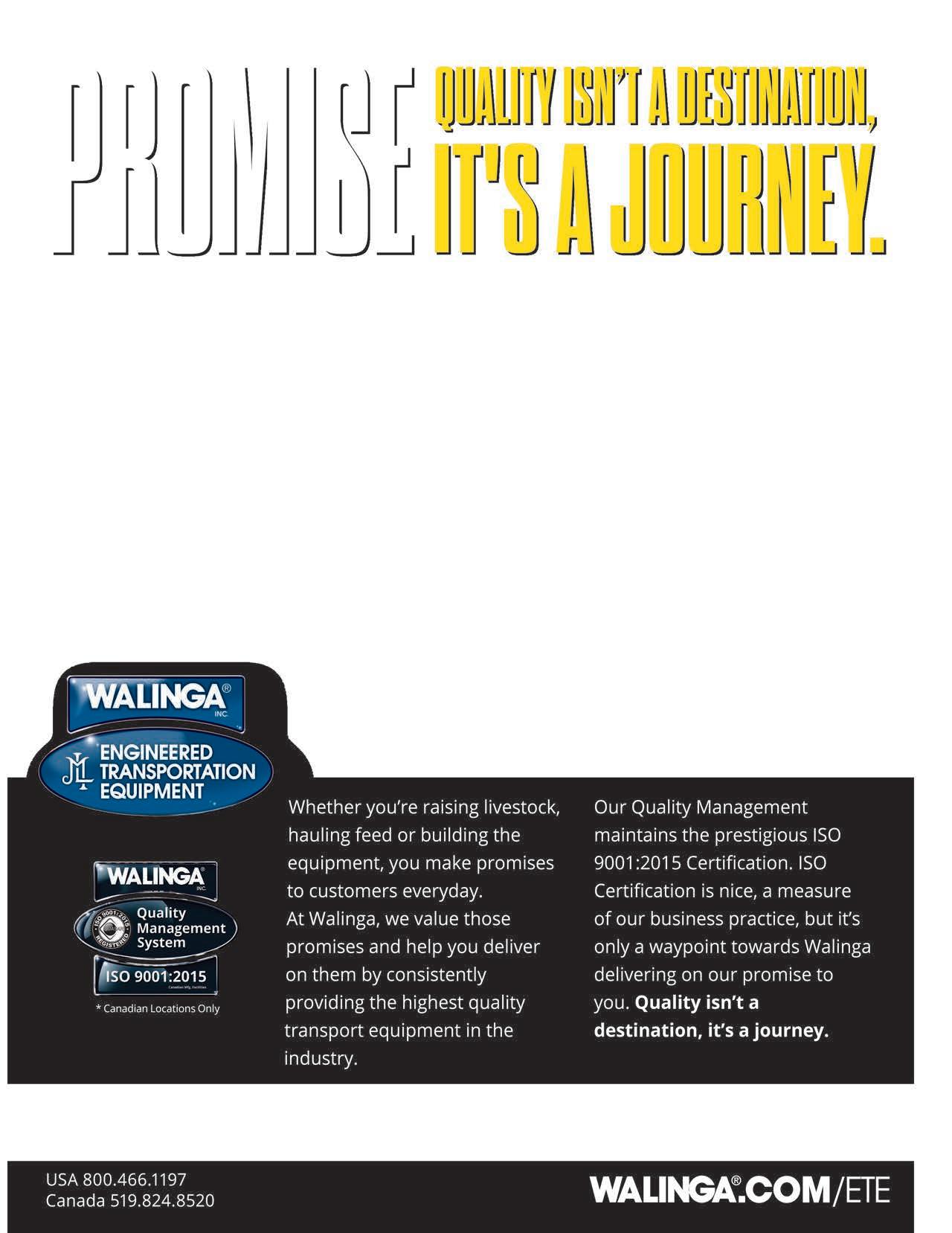





Wayne-Sanderson’s ‘Kosmic Krunch’ promises out of this world crispness
BY ELIZABETH BOBENHAUSEN
Poultry Times staff ebobenhausen@ poultrytimes.com
OAKWOOD, Ga. — WayneSanderson Farms has announced its new line of crispy chicken called the “Kosmic Krunch.”
A media statement released Wayne-Sanderson Farms said, “a new product line that utilizes a proprietary breading system for chicken chunks, tenders and strips to retain a crunchy texture for an extended amount of time.”
According to Wayne-Sanderson Farms, 70 percent of costumers are opting to order food online and 50 percent of restaurants now offer delivery services. The Kosmic Krunch was made so the breaded chicken wouldn’t lose its
crunch as it was being delivered.
“With so many consumers turning to online and take-out, this is a huge development for our restaurant and food service operator customers,” Keri Hart, Wayne-Sanderson Farms marketing brand manager, said. “Keeping breading crisp and ready to serve is always a concern, particularly for take-out and delivery, and Kosmic Krunch provides both a solution and opportunity to expand menu options to deliver an unmatched experience for consumers.”
Many types of preparations were kept in mind when developing this new product at the company’s Customer Innovation Center and test kitchen in Decatur, Ala., from frying to pizza ovens, to impingement cooking.
The company wanted to ensure that the chicken was crispy even when it was put into sauces or used for other purposes such as catering, buffets, concessions, delis, and grocery stores.
Wayne-Sanderson Farms Corporate Chef Beau Batchelor said, “We are not just producing chicken, we are helping our customers deliver the highestquality product. Kosmic Krunch’s proprietary breading system ensures the quality and consistency of breaded chicken products and provides our restaurant and food

service operators with confidence in the integrity of their dishes — no matter where they are being consumed.”
To promote the new line the company added that it is offering discounts, special sales and marketing support to assist with the promotion of this new product.
FLY PROBLEMS?
Got Manure? We have the cure! Entomologist on Staff. Free Phone Consultation.

POULTRY TIMES POULTRYTIMES.COM 29
www.kunafin.com 1-800-832-1113 WHOLESALE PRICES: On cartons, labels, flats, trays, nests, marketing items, poultry supplies & more! 866.333.1132 www.eggcartonstore.com ®
PT

White House ‘Colonnade of Eggs’ exhibit honors military families
BY ELIZABETH BOBENHAUSEN Poultry Times staff ebobenhausen@poultrytimes.com
WASHINGTON — The White House hosted its annual Easter Egg Roll Apr. 1, in partnership with the American Egg Board. AEB expressed how proud it is to have worked on the “Colonnade of Eggs” project to support First Lady Jill Biden’s initiative to help military families. Children of National Guard families created egg designs that were displayed in the East Colonnade of the White House.
“Children from National Guard families across the nation submitted egg designs to be featured at the 2024 White House ‘Colonnade of Eggs’ exhibit,” AEB said. “Designs crafted by National Guard children from all 50 states, the District of Columbia, Guam, Puerto Rico and the U.S. Virgin Islands will be on display.”
However, this Easter Egg Roll art contest was met with controversy. According to Fox News, the flyer for the art contest said, “must not include any questionable content, religious symbols, overtly religious themes, or partisan polit-
ical statements. Selected designs representing the unique experience and stories of National Guard children will be brought to life on real hen eggs by talented egg artists from across the country and displayed at the White House this Easter and Passover season.”
Kelly Hokanson, National Guard Bureau senior spouse noted that she is, “so proud of the children of our National Guard families who took the time to submit these wonderful designs. What an honor to have their artwork displayed at the White House East Colonnade. Thank you to America’s egg farmers for this partnership. And thank you to the First Lady, Dr. Jill Biden, and to her Joining Forces initiative, for always remembering our children and providing them this once-in-a-lifetime opportunity.”
“On behalf of the American Egg Board and America’s egg farmers, we are proud to support those who serve our country and their families through this special exhibit and of course to highlight eggs and egg farmers,” said Emily Metz, president and CEO of the American Egg Board. “Each handcrafted egg highlights the unique experiences and stories of these chil-
dren for thousands of tourists to see during the Easter season at the White House.”
Some of the children spoke about their designs on display, in an AEB release, including: Eight-year-old Allyson P. of Colorado, said, “I love my family and my country. My dad used to fly F-16s and my mom works in aircraft maintenance in the Colorado Air National Guard. Living in Colorado is the best: the sun, the mountains, the snow, the rain, and all the nice people.”
Michaela W., 16, of Michigan said, “growing up as a military child, I was very patriotic. The photo on the front of my egg is a picture of me wearing a uniform along with a backpack brought back from Afghanistan. The photo on the back is of me hugging my dad after a training.
Leeam M., 9, of Puerto Rico said,“my drawing represents the National Army Guard of Puerto Rico with the elements of the coqui and the flag.”
AEB adds that during the past three years, it has collaborated with the White House on larger springtime egg art showcases.

POULTRY TIMES POULTRYTIMES.COM 30
PT
Official White House Photograph by Erin Scott
The 2024 White House Easter “Colonnade of Eggs” exhibit in the East Colonnade celebrates National Guard families.

--














































































































